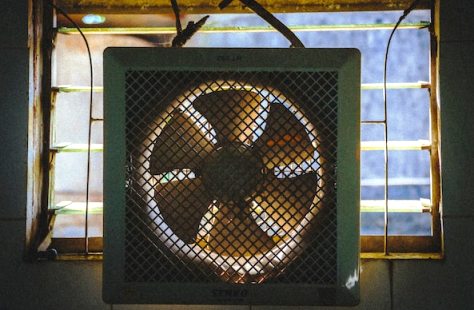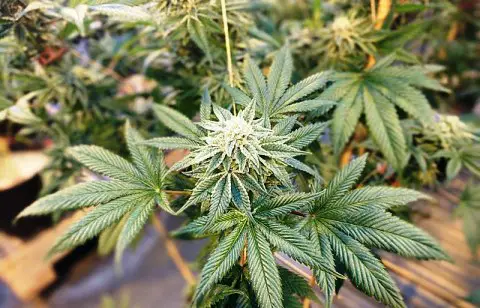What Is a Good Humidity Range for Flowering?
People ask this critical question when they want to know how to control humidity in a grow tent or greenhouse.
And this does not apply to growing cannabis alone. It applies to all plants. You have to know a good humidity level to maintain during the flowering stage of that plant.
So, is 60% humidity too high for flowering? Maintain a humidity level of 40 to 50% for cannabis plants during the first flowering stage when the buds open. Humidity that’s above 60% can cause flowers and buds to rot. In the last flowering stage, maintain a humidity level lower than 40%. This increases the yield and the appearance of the plant.
Is 60–70% humidity too high during flowering?

This humidity level is very high. It is appropriate for plants in their young stages. Keep it high at the clone or seedling level.
At this stage, the roots are not developed, so the plant needs a lot of water. As the plants grow older, they start needing less humidity. Eventually, they will need less than 40% in the last stages of flowering.
High humidity can cause bud and flower rot
During flowering, high humidity levels can cause flower and bud rot. This would affect your yields.
In the flowering stage, the plant does not need all that moisture in the air. It will get its water from the soil.
Thus, you need a hygrometer to ensure the humidity stays within the recommended level.
When you are one week from harvesting your cannabis, keep the humidity level lower than 40%.
It is also important to know whether to keep the grow room sealed or open. Remember, during the humid seasons, the humidity outside affects the humidity inside.
If the outside air is more humid, you definitely have to use a dehumidifier in the growth space. You can even use the same dehumidifier with a drain hose that you would use for the basement.
High humidity causes mold
The grow room is a perfect habitat for mold. There is moisture, controlled lighting, and nutrients.
If you don’t control the humidity, the mold will grow fast. Working too long in a mold-infested place can cause signs of mold toxicity.
Mold will thrive when the humidity level is above 60%. However, some stages of plant growth will need high humidity.
Still, you should check for symptoms of mold to prevent its growth. When the plants no longer need high humidity, keep it below 60%.
Mold can grow on the walls of the grow room, the floor, the ceiling, and even on the plants themselves. The most common type of mold growing on the plants is white mold. It covers the leaves and prevents the plant from breathing properly.
Why do you have high humidity in the grow room?
This is another thing that bothers the minds of first-time growers. They just don’t know where the high humidity is coming from!
If you know why the humidity level in the grow room rises so much, you can prevent it from happening.
So, where does the high humidity in your growth tent come from?
High temperature in the grow room increases humidity
There is a relationship between temperature and humidity. When the latter rises to a certain level, the air expands and can hold more moisture.
This is why we don’t need a humidifier in summer. The high temperatures raise the humidity levels.
Also, when the air is hot, it moves around faster. It can hold more water and move faster, spreading the humidity all over the air in the room.
If it is not checked, there will be a lot of humidity in the grow room air, making it feel sticky and hot to even work in there.
The plants lose water to their surroundings
When the stoma in the leaves and stems of the plants opens, they will lose water to the atmosphere.
That’s why the humidity is usually too high in tropical rainforests.
The water they will lose to their surroundings is absorbed by the air. Since humidity spreads to dry areas quickly, the humidity in the grow room can spread quickly.
Plants don’t lose water to their surroundings. They also lose carbon dioxide.
Unknown to many people, carbon dioxide can raise the temperature of a place. It is more likely to do so in enclosed spaces.
You have not installed an exhaust fan

When the air outside is drier than the air inside your grow room, you should vent it outside. Your plants lose water to the atmosphere. This water just sits in the air until you vent it outside.
Installing an exhaust fan can help remove damp air from the room. It can exchange it with the dry air from outside.
This will help to lower the humidity level considerably. The secret is to get an exhaust fan with a timer. When the air moisture level rises in the grow room, it will switch on and remove the humid air.
The exhaust fan is a good option for a room that does not have ventilation. If you do not vent the humid air, it will just sit in your grow room. It even doesn’t matter how good the air circulation is in the tent.
You have too many plants crammed in the grow room
Cramming many plants in the grow room is going to raise the humidity level. They all lose water to their surroundings. The more they are, the more water they release.
Space them out at the recommended distance. If there is too much humidity, they will not flower well. The yield quantity and quality will also be affected.
Humidity level to be maintained in the last 2 weeks of flowering
During the last two weeks of flowering, lower the humidity considerably and keep it between 30 and 40%.
At this stage, the plants have already budded. You are now looking at improving the quality of the yield. If you keep the humidity too high at this point, the plant may change color. This affects the quality!
It is also good to know what your plants like and don’t like. For instance, some strains of cannabis are very sensitive to mold. Others are not!
In the last two weeks of the flowering stage, cool the grow room. It is also important to dehumidify the air.
Keep the air cool and the humidity low. This hardens the cannabis flowers in time for harvesting.
If there is too much humidity in the air, it is going to cause bud rot. It can also prevent the proper development of trichomes.
Fungal contamination at any stage of the plant’s growth is not advisable. Keep the humidity at the right levels throughout the growing period of the plant.
What temperature should the flowering stage be at?

Humidity is not the only determinant of how well your cannabis plants are going to flower. Temperature is also a big factor.
In the daytime, the best room temperature is 68 to 75 degrees Fahrenheit. At night, the recommended temperature level is 10 to 15 degrees Fahrenheit.
So, how best can you be in control of the temperature in the grow room? You need an air conditioner. It is possible to run an air conditioner and dehumidifier at the same time.
Lowering the temperature in the grow room lowers the humidity level. Thus, if you have an air conditioner, you don’t need a dehumidifier.
Remember, though, that at very high humidity, the air can feel hotter than it is. If this happens, it might trigger your plants to start losing water to their surroundings.
The human body also does the same. We explained that in detail in our article on the health effects of high humidity on the human body.
Final thoughts: Is 60% humidity too high for flowering?
60 percent humidity is too high for flowering on different plants. Such a high humidity level is recommended in the seedling or clone stage.
Keeping high humidity inside the grow room has many side effects. It will cause white mold, which covers the stem and the leaves. It prevents the proper transpiration from taking place.
It can also cause bud and flower rot, affecting the yield quantity and quality. Keep an eye on the humidity and the temperature during the day and night.

